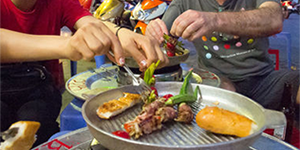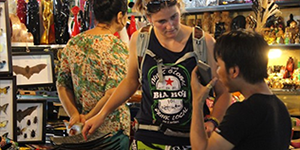What to see
.jpg)
Address: 15 NguyễnĐìnhChiểu, HaiBàTrưng, Hanoi
Cheo is a distinctive art form of the Northern Vietnam. It is the response to the Beijing Opera of China and the Nou drama of Japan. Cheo brings a high sense of community with lyrics rich in emotion and images. The old citadel of Hoa Lu, NinhBinh province claims to be the birth place of this folklore art. A court maid – also an exceptional dancer and singer from the Dinh Dynasty developed the art through her usual performance for the royal family. Vietnamese gradually composed the plot for Cheo based on the older art of story-telling.
The most dramatic evolution of Cheo was attached with the aftermath of a war. During the 14th century, the Mongolian then ruling China waged an invasion against Vietnam. Despite severe loss, Vietnamese succeeded at driving them out. A Mongolian prisoner brought to the Vietnamese court introduced the art of singing to the original Cheo. Then, Cheo started to include improvisation, story-telling and of course singing.
In the 15th century, the radical movement of Strict Confucianism drove Cheo out of the court stage. The art was then embraced among the common folk just to reach its peak around the 19th century. Cheo, hence, now is still a rustic art of the people.
The Technique
As mentioned above, Cheo is an inclusive art. It is a story-telling art on stage which are flexible for improvisation. The stage is of mere simplicity. Most of the times, it is the front yard of the village’s communal house. Other times, it is simply a grass mat in which the actors stand.
The room for improvisation in Cheo is ample unlike other classical European dramas- i.e opera. The length of the play is subject to the artists’ inspiration or the audience’s demand.
The Music
Cheo uses at least three instruments which are the moon guitar, the two-stringed guitar and the one-string gourd. Sometimes, flute and drums are included. The small drum is of importance as it helps increase the dramatic sense for the story.
The Story
Cheo describes the common life of commoners. Many stories depict the harsh and altruistic life of the women in the feudal society. The stories might have been adapted from fairy tales and folklore. In Cheo, the good always win the bad and of course happy ending is a sense. However, the beloved part includes the sarcasm criticizing the evil and the hypocritical of the society.
If you are into folklore art, buy your ticket at around 100,000 VND and enjoy the show.




